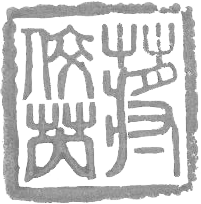Timing: 2023
Scale: 2 weeks
Overview of HOW I IDENTIFIED THE KNOWLEDGE GAPS AND PROACTIVELY SHARED TECHNICAL INSIGHTS TO ELEVATE THE UX TEAMS.
The problem
UX teams struggle to adapt to shifting organizational priorities around Cloud
As Dell try to align different products together to offer customer cohesive experiences in response to the threats of cloud computing, we were seeing issues that impacted the effectiveness of the UX teams:
On the design side: We’ve had some (relatively) new hires being assigned to cloud-related projects without the necessary training on IT infrastructure or cloud. This has led to some communication challenges with Product Management.
On the research side: An overly narrow focus on the product and its immediate users has made it difficult for researchers to recognize how broader industry trends are influencing user demographics and expectations, and how different products interconnect within the overall ecosystem.
Collaboration challenges: My team was being asked to work with an external UX team that traditionally specialized in e-commerce. This team lacks familiarity with the technical complexities and design challenges associated with IT infrastructure, which has posed additional hurdles.
Perception of UX: In many business areas, UX was viewed more as a support to Product, rather than as an equal partner. This perspective has often limited UX to merely executing predefined design requirements, rather than contributing to the broader product strategy and development.
The approach
Synthesize domain knowledge collected
As I delve into foundational and strategic research on Cloud Computing, I've had to acquire a robust technical understanding of cloud technologies to facilitate meaningful discussions with research participants. This process involved engaging with internal subject matter experts and reviewing industry reports. Armed with a solid grasp of cloud computing and IT infrastructure, I have been able to explore the diverse journeys and challenges that various customer organizations experience with cloud technology, as well as the impacts on their IT teams. Instead of merely presenting these findings, I have chosen to create a 'Cloud 101' presentation to help my colleagues deepen their understanding of this field in context of the projects they are working on.
Cloud 101 Knowledge Sharing
Knowing my audience would be the UX Designers and Researchers from my team as well as the external team, I've set specific goals to enhance our collective knowledge and strategic thinking:
Establish a common technical foundation on IT infrastructure and cloud computing for all team members
Clarify the historical context and evolution of Dell’s products and offers in the space.
Explain how changes in cloud technology are transforming the market and user expectations
Encourage innovative thinking about new user types, interaction models, and experience expectations driven by advancements in cloud technology
Below is the high level structure of the presentation I made (since detailed information can’t be shared publicly).
The Impact
UX teams aligned on Cloud context
Clarity for the team: After my presentation, several members from both my UX team and the external UX group reached out to express their gratitude. They appreciated the way I broke down several concepts that had been confusing them, noting that they hadn't previously felt comfortable asking for clarification from the technical teams.
Exposure to UX leadership: In recognition of the impact of my presentation, both my Director and Vice President have invited me to deliver a condensed version to our newly appointed SVP, who comes from the Consumer Business side. This will provide an overview of our Enterprise IT Infrastructure business and introduce the new challenges our UX team is poised to address.
Systematized future knowledge shares
For conducting research into new technical domains, I consistently engage in a similar rigorous information-gathering process as I did for Cloud Computing - consulting with internal subject matter experts and analyzing reports from industry analysts to build a sufficient knowledge base. Only then can I engage in meaningful discussions with research participants.
I have taken a proactive approach to synthesize my learnings to educate my team about the new domains, including
FinOps 101
ITOps 101
DevOps 101
Internal Developer Platform (IDP) 101
Onboarding new team members to Edge Computing and internal Edge products
Generative AI 101
These knowledge sharing presentations, just like “Cloud 101”, have been instrumental in clarifying common terminology confusions, aligning various teams around a unified context, and enhancing effective collaboration between UX and cross-functional stakeholders.



